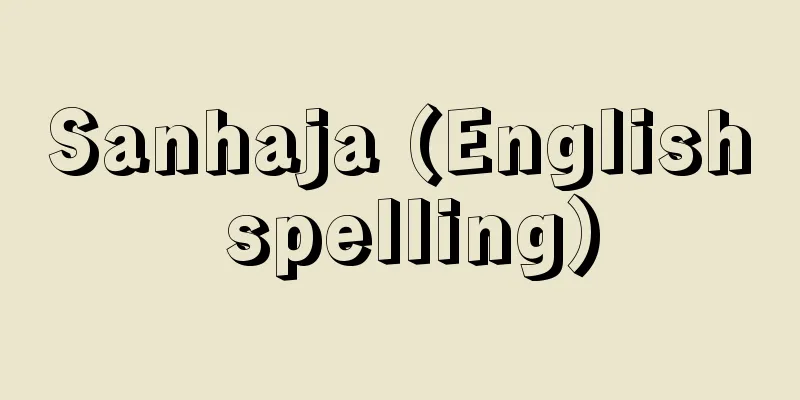Sanhaja (English spelling)

|
...The exact number of Berber speakers today is unknown, but they are unevenly distributed in more than 10 countries in North and West Africa, with the largest number in Morocco (especially in the Atlas Mountains), where they make up more than 30% of the population, followed by just under 20% in Algeria (more than 2 million people live in the Kabylie region of the Tell Atlas in the north, where they are called Kabyle), and 1-2% in Tunisia, mainly on the southern island of Djerba, so the total number is probably close to 10 million. Linguistically, they are broadly divided into three dialect groups: the Zanāta group, the Sanhāja group, and the Maṣmūda group. The Maṣmūda group is represented by the Sirha group in the western High Atlas of Morocco, and the Sanhāja group is represented by the Kabyle group in Algeria, the Tuareg in the Sahara Desert, and the inhabitants of the Middle Atlas and central High Atlas of Morocco. From Maghreb...They are diverse, ranging from those with red hair and blue eyes who look like Caucasians, to those with black skin and curly hair who look like Blacks, to those with sharp eyes who are indistinguishable from Arabs, and it is difficult to distinguish them by appearance. According to the Book of Ibal by Ibn Khaldun, a scholar from Tunis in the 14th century, the Berbers are broadly divided into the Zanata, Sanhaja, and Mamūda. The Zanata were originally nomads in Tripolitania and Tunisia, and were relatively cooperative against the Arab invasion, but were driven westward by the invasion of the Arab nomads Hilāl and Sulaym, and came to live from western Algeria to Morocco (Rif Mountains, etc.). *Some of the glossaries that mention "Ṣanhāja" are listed below. Source | Heibonsha World Encyclopedia 2nd Edition | Information |
|
…現在のベルベル諸語人口の正確な数はわからないが,北・西アフリカの10ヵ国以上に不均等に分布し,一番多いモロッコ(とくにアトラス山地に集住)では人口の30%以上,次のアルジェリアでは20%弱(北部のテル・アトラス山脈のカビリー地方には200万人以上が集住しカビールとよばれる),チュニジアでは南のジェルバ島を中心に1~2%ということで,全体ではおそらく1000万人近い数と推定される。言語的には,ザナータ(ゼナータ)Zanāta系,サンハージャṢanhāja系,マスムーダMaṣmūda系の3方言群に大別される。マスムーダ系は,モロッコのオート・アトラス西部のシルハによって代表され,サンハージャ系は,アルジェリアのカビールやサハラ砂漠のトゥアレグ,モロッコの中部アトラス,オート・アトラス中央部の住民などである。… 【マグリブ】より…紅毛碧眼で白人のようにみえる者から,皮膚が黒く,髪のちぢれた黒人系に似た者,目が鋭くアラブと区別できぬ者まで多様であり,外見上の区別は難しい。14世紀チュニス出身の学者イブン・ハルドゥーンの《イバルの書》によれば,ベルベルは,ザナータZanāta系,サンハージャṢanhāja系,マスムーダMaṣmūda系に大別される。ザナータ系はもともとはトリポリタニア地方やチュニジアの遊牧民で,アラブの侵入に対しては比較的協力的であったが,アラブ遊牧民ヒラールHilāl族とスライムSulaym族の侵入によって西方へ追いやられ,アルジェリア西部からモロッコ(リーフ山地など)にまで住みつくようになった。… ※「Ṣanhāja」について言及している用語解説の一部を掲載しています。 出典|株式会社平凡社世界大百科事典 第2版について | 情報 |
Recommend
Spongy tissue - Cavernous tissue
One of the tissues that make up the mesophyll of ...
Zelotai (English spelling)
…In 6 AD, when Judea became a direct province of ...
Chordodes japonensis (English spelling)
…When these insects emerge and are eaten by insec...
Comfort in the lonely seat
A book of popular songs. 1 volume. Editor unknown....
Kikuchi Yari
...The blade is usually triangular with a ridge o...
counsel de guerre (English spelling) counsel de guerre
… In Japan, in 1872 (Meiji 5), a bureau of the Mi...
bush cricket
…It is an insect of the grasshopper family with s...
celluroid screen
The word celluloid was first used in filmmaking i...
Equivalent
〘Noun〙① The state in which two mathematical propos...
Shimokawabe Choryu
Year of death: 3rd June 1686 (22nd July 1686) Year...
au - au
The unified brand name for mobile phone services ...
Simon, Richard
Born May 13, 1638 in Normandy, Jeb Died April 11, ...
Battle Hymn of the Republic
A beloved American song. It is also familiar in Ja...
Motoharu Fujita
1879-1958 A geographer from the Taisho to Showa p...
Nadelman, E.
...Around the end of the 19th century, academic n...









